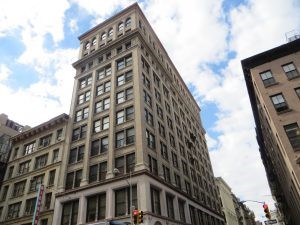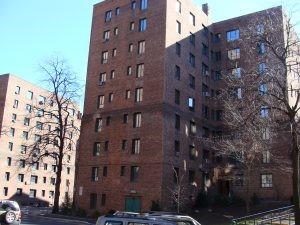
On May 16, 1979, a young woman attending Barnard College, Ms. Grace Gold, was fatally struck by a piece of terra cotta that fell from the eighth story of a building on West 115th Street in New York, NY. As a result of this tragedy, Mayor Ed Koch signed Local Law 10 into law on February 21, 1980. This law required that a licensed engineer or registered architect oversee the inspection of the façade of every building greater than six stories in the five boroughs of New York City (NYC). The inspections would occur once every five years and a report would be filed with the NYC Department of Buildings (DOB).
Initially, the requirements set forth in Local Law 10 were more flexible and contained several exclusions. Engineers and architects were only required to inspect street-facing façades greater than six stories, as opposed to the entire building (four or more elevations), or if a façade or partial façade was more than 25 feet from the street. If the building was greater than six stories but had a setback greater than 25 feet, the upper floors were excluded from a required inspection. Buildings with an ongoing DOB-approved façade maintenance program were also excluded from additional inspection.
The term “inspection” also had a flexible definition in the original Local Law 10. Engineers and architects were encouraged, not required, to perform hands-on inspections from scaffolds or man lifts. According to the law, a visual inspection with the use of telephoto lenses or binoculars was sufficient.
The tragic death of Ms. Gold was unfortunately not the last façade-related injury or death in New York City. On July 28, 1982, a 28-year-old lawyer was hit by a piece of a cornice that fell from a 30-story building in Brooklyn. At that time, Local Law 10 was still rather new and only approximately 60% of all eligible buildings had filed a report.
In the winter of 1997, a rash of partial collapses and falling masonry led to the reform of Local Law 10. On December 15, 1997, a shower of bricks rained down on Madison Avenue and 55th Street from a 39-story building. Six years prior in 1991, an engineer filing the mandated DOB report deemed the building safe, as they could not see from the street that the brick ties that should have held the outer wythe (layer) of brick to the building were missing. Although this would be difficult to observe, even from a suspended scaffold, it is possible the engineer would have noticed shifted brick throughout the façade, deeming the building unsafe and in need of immediate repairs.
Other incidents that led to Local Law 10 reform occurred later that same month in December 1997. On December 29, a chunk of stone damaged the concrete sidewalk outside the Hotel Belleclaire. The very next day, a 16 square-foot piece of the concrete parapet fell from the Church of Scientology building on West 46th Street, damaging the sidewalk below. Earlier that same morning of December 30, 1997, the façade of the 6-story Selwyn office building, adjacent to the Selwyn Theater, collapsed. While no injuries were sustained, these incidents shed light on the loopholes of Local Law 10.

Due to these falling masonry events, Local Law 10 was removed from the building code, and Local Law 11 was signed into law on March 13, 1998. Almost all the exceptions in Local Law 10 noted above were removed in Local Law 11. In the new law, the only exterior walls now exempt were those less than 12 inches from the exterior wall of an adjacent building. In addition, Local Law 11 better outlined what was required of the engineer or architect performing the inspection.
To standardize the inspection process and make the DOB’s review process more efficient, three pages of the new law explained what was to be included in the report and how the report was to be written. Another major change in the inspection process was that the engineer or architect now had to perform an inspection of the street façade using a suspended scaffold, or other means of observing the façade, from the ground to the top of the parapet. The DOB also required that architects and engineers provide notice of any unsafe conditions found during the inspection process.
During the law’s 7th Cycle in 2010, Local Law 11 was renamed the Façade Inspection and Safety Program (FISP). In May 2013, a renewed focus on balcony and railing inspections was introduced, as well as the requirement for the submission of a supplementary affidavit to the 7th Cycle reports to acknowledge the inspection of balconies and railings. Additionally, load testing or laboratory testing of the concrete is sometimes required by FISP. These changes came about due to the fatal fall of a 35-year-old woman from her balcony in August 2013.
While many major cities across North America have mandated façade inspections, New York City has the oldest continual façade ordinance in the United States. Some of the other cities with façade ordinances in effect include Boston, Chicago, Cincinnati, Cleveland, Columbus, Detroit, Jersey City, Milwaukee, Philadelphia, Pittsburgh, San Francisco, and St. Louis. Most of these ordinances require inspections by an architect or engineer every five years on buildings over five stories. Performing these mandatory inspections can help maintain public safety and ensure that aging infrastructure is properly maintained.
For more information on façade inspections and related code requirements, please visit the following blog posts with similar topics: